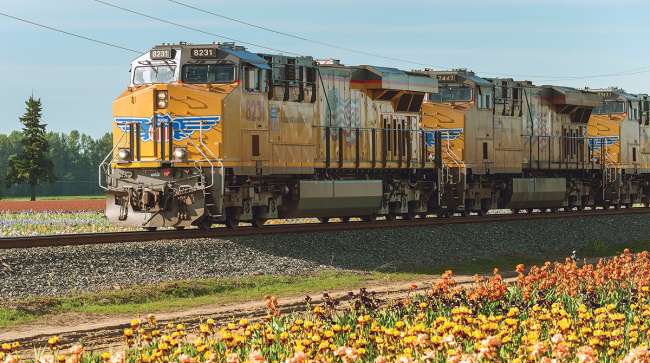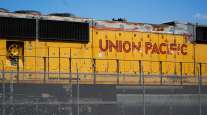Senior Reporter
Union Pacific Posts Lower Net Income, Revenue in Q3

[Stay on top of transportation news: Get TTNews in your inbox.]
Union Pacific Corp. is the latest Class I railroad to report lower third-quarter earnings when measured against 2019, with company officials saying Oct. 22 the COVID-19 pandemic is responsible for the drop in net income and revenue.
The Omaha, Neb.-based company’s net income was down 12% to $1.36 billion or $2.02 a share, compared with $1.55 billion, or $2.22, in the same period in 2019.
Quarterly revenue also was down, 11% to $4.91 billion from $5.51 in 2019.

Over the past few episodes, we've had the chance to listen to the experiences of industry leaders and the strategies and planning that go into finding the right people for your workforce. Host Michael Freeze reviews the most important bullet points, from technician and driver training to incorporating diversity in recruitment and retention. Hear a snippet, above, and get the full program by going to RoadSigns.TTNews.com.
The railroad’s operating ratio improved to 58.7 from 59.5. Operating ratio, or operating expenses as a percentage of revenue, is used to measure efficiency. The lower the ratio, the higher the company’s ability to generate profit.
The report missed the expectations of Wall Street analysts who were anticipating earnings of $2.05 a share and revenue of $4.96 billion.
“We had an impressive quarter to turn in the results you see that we turned in today,” Chief Operating Officer Jim Vena told analysts on a conference call. “We dealt with a sharp volume increase, following the equally steep decline of the second quarter, as we continue to navigate the pandemic. All in, it was a very good quarter for the entire operating team. We expect to see improvements in the fourth quarter.”
It also was announced on the conference call that Vena is retiring from the railroad in 2021 and will assume a senior adviser role through the summer of next year.
Union Pacific Chief Operating Officer Jim Vena moving to Senior Advisor Role, Effective Jan. 1, 2021; Eric Gehringer Appointed EVP-Operations https://t.co/vDjYFCVhnT — Union Pacific (@UnionPacific) October 20, 2020
Its adoption of precision scheduled railroading — a principle designed to lower costs and improve overall efficiency by increasing the number of freight cars that are moving in the system on fewer trains — also is paying off.
Union Pacific operated in the third quarter with 18% fewer employees than last year at this time, 30,155 compared with 36,659.
The company noted that the falling price of diesel fuel helped its bottom line; fuel costs are 35% below what they were a year ago.
“The results we are delivering, both operationally and financially, deepen our conviction that the changes we’re making to transform our railroad are on target and on track,” CEO Lance Fritz said. “An improved customer experience, coupled with a lower cost structure, is opening up new markets and opportunities to grow our business as we win with customers and convert more freight to rail.”
Revenue from all sectors that the railroad carries freight declined, with one exception. Intermodal was up 5%, to $1.07 billion from $1.02 billion.
Sectors that showed decreases:
- Fertilizer — 2% to $157 million from $161 million.
- Grain and grain products — 1% to $695 million from $704 million.
- Food and refrigerated items — 6% to $239 million from $253 million.
- Coal and renewable energy products — 31% to $387 million from $563 million.
- Bulk items — 12% to $1.47 billion from $1.68 billion.
- Industrial chemicals and plastics — 8% to $454 million from $494 million.
- Metals and minerals — 30% to $365 million from $520 million.
- Forest products — 2% to $284 million from $290 million.
- Energy and specialized markets — 22% to $464 million from $598 million.
- Industrial — 18% to $1.56 billion from $1.9 billion.
- Automotive — 11% to $481 million from $542 million.
- Premium freight — 1% to $1.55 billion from $1.562 billion.
Want more news? Listen to today's daily briefing:
Subscribe: Apple Podcasts | Spotify | Amazon Alexa | Google Assistant | More


